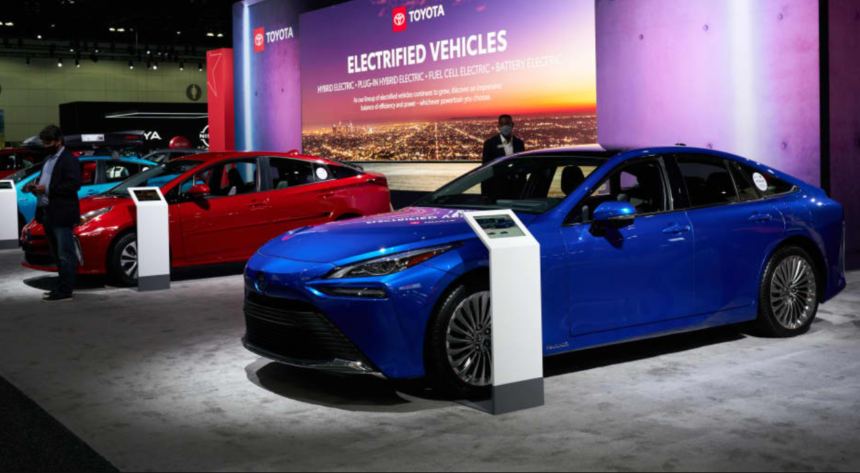Toyota Hybrid Cars: Toyota’s profit more than doubled, thanks in part to high demand for hybrid vehicles.
- IMPORTANT NOTES
- The Japanese automaker is well-positioned to benefit from a slowdown in EV demand in the United States.
- Toyota also boosted its full-year revenue forecast.
Toyota Motor said on Wednesday that its quarterly profit more than quadrupled from the previous year due to robust global demand for hybrids and favorable currency movements. The automaker also improved its fiscal year-end guidance and expanded its dividend and share-repurchase program. Its shares in the United States climbed more than 3% in early trading.

It has long resisted making large expenditures in pure electric vehicles, claiming that its well-regarded hybrids are a better option for most buyers. In June, the business ultimately succumbed, announcing an aggressive plan to spend heavily in improved batteries and increase EV sales to 1.5 million per year by 2026. It announced on Tuesday that it will invest $8 billion to significantly expand a battery plant now under development in North Carolina and scheduled to open in 2025.
However, with automobile buyers, notably in the United States, moving away from EVs because to higher financing costs and concerns about public charging, Toyota is now profiting from increased demand for its staunch hybrids.

Toyota’s conventional hybrid sales increased 41% year on year to around 888,000, while plug-in hybrid sales increased nearly 90% year on year to over 39,000. “Electrified vehicles,” which include hybrids, battery-electric models, and fuel cell-powered vehicles, accounted for 36.4% of Toyota’s total global sales in the third quarter, up from 27.3% the previous year.
Toyota reported that its operational profit in the second quarter of its fiscal year 2024, which ended on September 30, grew by more than 155% year on year to 1.44 trillion yen ($9.5 billion). Strong pricing on Toyota’s hybrid models, particularly the new Prius, contributed to the year-over-year gain in operating profit. Toyota’s revenue of 11.44 trillion yen ($75.7 billion) was 24% higher than the previous year, as it sold more vehicles across the board. Total car sales increased by nearly 13% year on year to 2.4 million.

Exchange rates, notably the depreciation of the yen against the US dollar and euro, contributed to Toyota’s year-over-year earnings growth. During the quarter, $1 was worth 145 yen on average, up from 138 yen in the same quarter of 2022. In euro terms, the shift was even more significant, rising from an average of 139 yen per euro a year ago to 157 yen per euro throughout the period.
Toyota also increased its earnings prediction for the fiscal year ending March 31. It now forecasts 4.5 trillion yen ($29.8 billion) in earnings, up from 3 trillion yen in previous estimates. It anticipates the weaker yen to account for the majority of the rise, or around 1.2 trillion yen. In addition, the business announced a 100 billion yen ($662 million) share buyback and a 5 yen rise in dividends from a year earlier, to 30 yen (20 cents) per share.

Frequently asked questions
What is cost of Toyota hybrid?
Automatic
| Variants | Ex-Showroom Price | |
|---|---|---|
| Urban Cruiser Hyryder G AT 1462 cc . Petrol . Automatic | Rs. 15.69 Lakh Ex-Showroom Price View On Road Price | View October Offers |
| Urban Cruiser Hyryder V 1462 cc . Petrol . Manual | Rs. 16.04 Lakh Ex-Showroom Price View On Road Price | View October Offers |
Which Toyota car is hybrid?
2022 Toyota Prius Prime
Is the Toyota hybrid a full hybrid?
They have constantly improved their full hybrid technology, which reacts to driving conditions to achieve maximum efficiency. In cities, our HEVs can travel up to 75% of the trip with zero emissions.
Also Read: Stocks Are Making The Biggest Changes Before The Market Opens: AMD, WeWork, Wayfair, Humana And More
image source: google




































